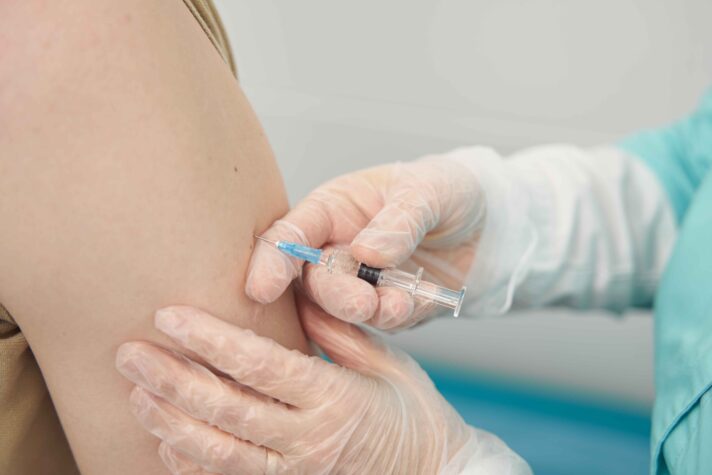Gonorrhea: Causes, Symptoms, Treatment, and Prevention

"The following blog article provides general information and insights on various topics. However, it is important to note that the information presented is not intended as professional advice in any specific field or area. The content of this blog is for general educational and informational purposes only.
Book consultation
The content should not be interpreted as endorsement, recommendation, or guarantee of any product, service, or information mentioned. Readers are solely responsible for the decisions and actions they take based on the information provided in this blog. It is essential to exercise individual judgment, critical thinking, and personal responsibility when applying or implementing any information or suggestions discussed in the blog."
When it comes to sexual health, there’s a lot of information that is misunderstood and comes with stigmas. One of the most common sexually transmitted infections (STIs) out there is gonorrhea. If you know the basics or have no idea about it, it doesn’t matter as in this blog, we’ll talk in detail about what it is, how it’s spread, and how you can take care of yourself during this time.
What is Gonorrhea?
Gonorrhea is an infection caused by a bacterium named Neisseria gonorrhoeae. It mainly affects the mucous membranes of the body in places like the genitals, rectum, and throat. In simple terms, gonorrhea is one of those infections that can spread when you have unprotected sex or come into contact with bodily fluids from someone who’s infected.
Is There More Than One Type of Gonorrhea?
No. The bacterium Neisseria gonorrhoeae causes all gonorrhea infections, but it can infect different parts of your body. You might hear about throat or rectal gonorrhea, but they are just about where the infection is seen in your body.
What Causes Gonorrhea?
Gonorrhea is caused by the bacteria Neisseria gonorrhoeae. It spreads when someone who has the infection passes it to another person through intimate touch. It doesn’t matter if the person is showing symptoms or not- gonorrhea will still pass along even if there are no obvious signs.
How Is Gonorrhea Transmitted?
Gonorrhea is mainly transmitted through sexual activity like:
- Vaginal sex
- Anal sex
- Oral sex
But it’s not just about sexual intercourse. You can also get gonorrhea through close physical contact when the infected fluids come into contact with your eyes (though this is much rarer).
Signs and Symptoms of Gonorrhea
Not everyone who has gonorrhea will get all these symptoms. And even if they do, they might not show up immediately. When symptoms do show up, they will be different depending on the area of the body that’s infected. Here are some of the common signs:
For Women:
- Painful or burning sensation while urinating
- More vaginal discharge
- Bleeding between periods
- Pelvic or abdominal pain
For Men:
- Pain or burning sensation when urinating
- Discharge from the penis (may look like pus)
- Swollen or painful testicles
For Both:
- Throat gonorrhea can cause a sore throat, but sometimes it doesn’t show any symptoms at all.
- Rectal gonorrhea can show up with pain, itching, discharge, or even bleeding.
If you get any of these symptoms (or if you’re worried you may have been exposed), it’s better to get tested right away. Gonorrhea might bring serious health problems if left untreated, like infertility, pelvic inflammatory disease (PID) in women, and even complications with your heart or joints in some extreme cases.
How Gonorrhea Affects Intimate Relationships
Gonorrhea can have a toll on intimate relationships. For one, if you or your partner have gonorrhea, it’s best to avoid any kind of sexual contact until treatment is completed. If one partner is infected and doesn’t get treated, they can pass the infection back and forth, which can make it harder for both partners to get rid of the bacteria.
With that, the emotional toll of having an STI causes stress, confusion, and sometimes strain on a relationship. Have a regular talk with your partner on sexual health in a relationship.
How Is Gonorrhea Diagnosed?
Diagnosing gonorrhea is fairly simple, but it needs a trip to the doctor or clinic. On side note, Allo Health experts use great protocols to make you comfortable in this conversation while still collecting all the information needed for your diagnosis. Different tests are recommended for this:
- Urine test: To test gonorrhea in the genital area, you may be asked to give a urine sample.
- Swab test: If you feel symptoms in the throat or rectum, your doctor might use a swab to collect a sample from the affected area.
- Blood tests: In rare cases, gonorrhea can spread to the bloodstream, and a blood test is asked to detect it.
Treatment for Gonorrhea: What You Need to Know

Gonorrhea is treatable. But if left untreated, it can cause serious health problems. But don’t worry, most people get cured with the right treatment.
What’s the Treatment?
Gonorrhea is treated with antibiotics. The most common treatment is a dual therapy: one injection of an antibiotic and a dose of another oral antibiotic. It’s needed to take the full course of antibiotics even if you start to feel better, to make sure the infection is completely cleared.
Also, make sure that your sexual partner(s) are treated at the same time to avoid reinfection.
What If It Doesn’t Go Away?
If gonorrhea doesn’t respond to the treatment, it may be a sign of antibiotic resistance. In this case, your doctor will likely prescribe a different type of antibiotic. Talk to your doctor about this.
Over the years, Allo Health has helped more than 75,000 patients with sexual health concerns. Our personalised treatment plan gives a high success rate in improving sexual function and treating STIs in our patients. Book an online consultation with one of Allo’s leading experts.
Preventing Gonorrhea: How to Stay Safe
The best way to prevent gonorrhea is by following strict safe sexual practices. Here’s how you can protect yourself:
- Use condoms every time you have vaginal, anal, or oral sex.
- Get regularly tested, if you’re sexually active with multiple partners.
- Lower your number of sexual partners to lower your risk of getting gonorrhea and other STIs.
- Have a regular talk with your partner(s) about STI testing, safe sex, and any concerns you may have.
If you know you’ve been exposed to gonorrhea or any other STI, get tested and treated as soon as possible to prevent it from spreading.
Note: It’s possible to get gonorrhea even if you’re using birth control methods like the pill because these don’t protect against STIs. Only barrier methods like condoms or dental dams can reduce your risk.
Key Takeaways
- Gonorrhea is common, but it’s totally preventable and treatable. If you think you may have it, don’t panic. Just get tested and follow the treatment plan. Remember, using condoms and having a talk with your partner(s) is key to avoiding gonorrhea and other STIs in the future.
- Many people with gonorrhea may not show symptoms, which is why it’s often referred to as a silent infection. This can make it harder to diagnose without testing.
- If left untreated, gonorrhea can cause long-term health issues like infertility, pelvic inflammatory disease (PID) in women, and epididymitis (inflammation of the testicles) in men. It can also increase the risk of HIV transmission.
- If you’ve got any questions or concerns, don’t hesitate to talk to a healthcare professional. Learn more about how Allo Health can help you manage the symptoms of Gonorrhea
Most Asked Questions
-
What is gonorrhea?
Gonorrhea is a common sexually transmitted infection (STI) caused by a bacteria called Neisseria gonorrhoeae. It can infect both men and women, and it’s mostly spread through sexual contact. The infection affects the genital area, throat, eyes, and rectum.
-
How do you get gonorrhea?
You can get gonorrhea when you have vaginal, anal, or oral sex with someone who is infected. It’s spread through the bodily fluids like semen, vaginal fluids, and discharge from the infected person. Even if a person doesn’t show any symptoms, they can still pass the infection on to others.
-
How do you know if you have gonorrhea?
The only way to be sure if you have gonorrhea is to get tested. Your doctor can do a simple test by taking a swab from the infected area (like your throat, vagina, penis, or rectum) or a urine sample. It's quick, easy, and painless.
-
Can gonorrhea go away on its own?
No, gonorrhea won’t go away on its own. Without treatment, it can cause serious complications like infertility, chronic pain, and more risk of getting other STIs in the future. The good news is that it’s treatable with antibiotics, so if you catch it early, it’s quite easy to cure.
-
How is gonorrhea treated?
Gonorrhea is treated with antibiotics, but the exact treatment might vary. It's important to follow your doctor’s instructions and finish the full course of antibiotics to make sure the infection is completely cleared. It’s also important that your sexual partner gets treated too, so you don’t pass it back and forth. Allo Health has helped more than 75,000 patients with sexual health concerns including gonorrhea testing and treatment. So book your consultation with Allo Health now.
-
Can you get gonorrhea more than once?
Yes, you can get gonorrhea more than once. If you’ve been treated and cured, you can still get infected again if you’re exposed to the bacteria. So have safe sex, by using condoms, to reduce your risk of getting gonorrhea (or any STI) in the future.









































